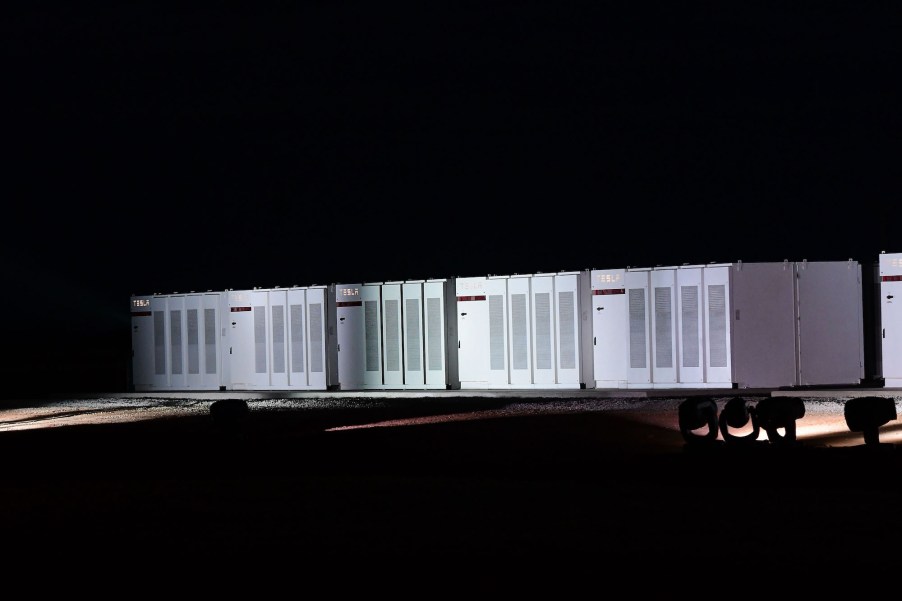
What Is a Tesla Megapack, and Why Did It Take 150 Firefighters 4 Days to Put Out a Blaze at a Megapack Plant?
Tesla has set the automotive world ablaze with forward-thinking ingenuity, and the EV maker prides itself on its environmental efforts. Battery-powered electric cars are taking the automotive industry by storm. But are they safe? Recent events at a Tesla Megapack plant have observers questioning the safety of this new tech and where it’s headed.
What is a Tesla Megapack?

A Megapack is a large-scale battery storage containment system that stores electric power for later use, Tesla explains.
“The Megapack offers the same energy capacity as other large-scale storage solutions but uses 40 percent less space and needs 10x fewer parts,” EnergySage reports. A single Megapack has several components, all contained in a single housing unit. Battery modules, inverters, heat management systems, wiring, and more are all part of a Megapack unit.”
A Megapack can store 3-megawatt hours of energy, which equates to 3,000 kilowatt-hours. This is more than 200 times the energy storing capacity of Tesla’s residential battery, the Powerwall. A battery system of this size could decrease utility demands and replace gas peaker plants that supplement the grid during peak demand.
The recent fire at a Tesla Megapack plant in Australia
A Tesla Megapack plant in Australia was the scene of a fire during the testing phase this past July 29. It took firefighters four days to extinguish the blaze. More than 30 fire trucks and over 150 firefighters were called to battle the fire for four days.
So far, researchers don’t know exactly what sparked the fire, but they’re investigating.
It took so long to put out the fire because lithium-ion batteries tend to burn very hotly once ignited. They also have a tendency to reignite quickly and repeatedly. However, this isn’t the first fire the batteries have caused. There have been 40 known blazes associated with large-scale lithium-ion batteries since 2012.
What causes lithium-ion battery fires?
To understand why these fires start, it’s important to understand the anatomy of the batteries. A hard shell encases the battery. This shell is important because it protects the internal lithium components from elements such as water, which react violently when they touch each other. There can be several cells connected within the battery, depending upon the battery’s use.
Fortunately, this is a rare occurrence. However, if one cell ignites, it can start a chain reaction that spreads to adjacent cells and continues spreading. Adding to this, the fact that not all of the cells react at the same rate makes fighting these fires dangerous and time-consuming. There’s no way to tell when the fire is completely out or if it will reignite. This is the reason why it took so long to control the Tesla Megapack fire in Australia.
At the moment, research is being conducted to make these batteries safer. There’s a lot of money being spent by companies such as Tesla to ensure the batteries can operate safely and effectively. If EVs are the future, replacing large-scale energy plants will be the next logical step. As with all new technology, there will be more and more improvements to the systems to make them function more efficiently and ensure they can operate safely.


